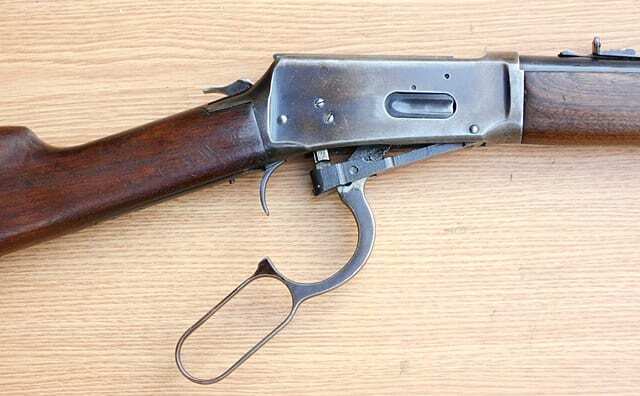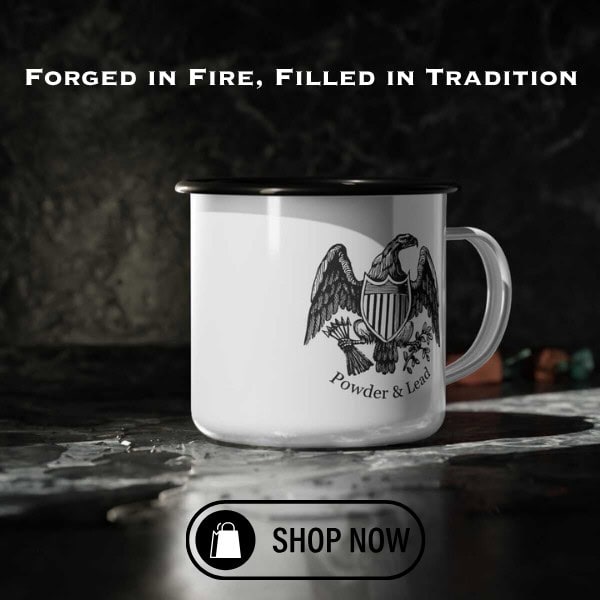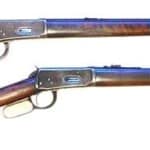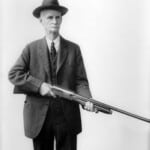
Introduction
The Winchester Model 1894, often referred to simply as the Winchester '94 or Model 94, is one of the most legendary lever-action rifles in American history. Designed by John Moses Browning and introduced by the Winchester Repeating Arms Company, the Model 1894 became the first commercial sporting rifle chambered for smokeless powder cartridges, revolutionizing the firearm industry. This rifle's versatility, reliability, and widespread adoption have made it a staple in North American hunting and an enduring symbol of the Old West and American frontier life.

From deer hunters in the Appalachian forests to lawmen and pioneers in the vast western plains, the Winchester 94 has left an indelible mark. With over seven million units produced and still in demand over a century after its inception, it remains one of the most successful rifles in history.
Development and Design
The Winchester Model 1894 was designed by none other than John Moses Browning, one of the most prolific and influential firearms designers of all time. This rifle improved upon previous lever-action designs, incorporating a vertical locking bolt system that provided enhanced strength compared to earlier Winchester models like the Model 1873 and Model 1886.
One of its most groundbreaking features was its compatibility with smokeless powder cartridges, a significant technological leap over the black-powder rounds that had dominated firearms since the 19th century. When it was first released, the Winchester Model 1894 was chambered in .32-40 Winchester and .38-55 Winchester, both of which were originally designed for black powder. However, in 1895, Winchester introduced the .30 Winchester Smokeless, later renamed the .30-30 Winchester, which became the rifle’s most famous chambering. The .30-30 was the first commercial American sporting cartridge designed exclusively for smokeless powder, delivering increased velocity, accuracy, and range.
The rifle's lever-action mechanism, combined with a tubular magazine beneath the barrel, allowed for quick follow-up shots, making it a favorite among hunters and ranchers. The compact size, light weight, and ease of operation gave it an advantage over bolt-action rifles, which were slower to cycle.
Comprehensive Guide to Model 1894 Calibers
The Model 94 has been chambered in a wide array of calibers throughout its production history, reflecting its adaptability to different types of hunting and shooting needs. Below is a detailed list of the most significant chamberings:
- .30-30 Winchester (1895 – Present): The most famous and widely used cartridge for the Model 94. Known for its ideal balance of power, accuracy, and manageable recoil, it has remained the gold standard for deer hunting in North America.
- .32-40 Winchester (1894 – Early 20th Century): One of the original chamberings, initially a black-powder round later adapted for smokeless powder. Primarily used for target shooting and hunting medium game.
- .38-55 Winchester (1894 – Present in Select Models): Another original chambering, known for excellent accuracy and knockdown power. It has seen a resurgence among modern hunters and collectors.
- .32 Winchester Special (1901 – Present): Introduced to provide slightly more muzzle energy than the .30-30 while being more suitable for handloaders who preferred black powder. A favorite among Eastern U.S. and Canadian deer hunters.
- .25-35 Winchester (1895 – Mid 20th Century, Reintroduced): A lighter, high-velocity round that was popular for varmint and small game hunting. Recently reintroduced in limited runs due to renewed interest.
- .219 Zipper (1937 – 1962): A lesser-known, high-velocity varmint round designed for small game and predator control. Its limited production run makes it a collectible caliber today.
- .32-20 Winchester (Limited Production): A small-caliber round traditionally used for small game hunting and pest control.
- .44 Magnum (1967 – Present in Some Models): Introduced later in production to cater to the pistol-caliber lever-action market, making it a great choice for brush hunting and short-range big game.
- .357 Magnum (Later Models – Present): Another pistol-caliber offering, favored for close-range hunting and cowboy action shooting.
- .45 Colt (Later Models – Present): Popular among cowboy action shooters and those looking for a classic revolver-cartridge lever gun.
- .450 Marlin (2000s, Limited Production): Found in select modern reproductions, offering significantly increased power for hunting larger North American game.
- .22 LR, 22 WMR (9422 variants): A variety of rimfire calibers are found in the 9422 variants
While the .30-30 Winchester Model 1894 remains the dominant chambering, other calibers have had devoted followings. As hunting expert Jack O’Connor once stated, “The .30-30, in a Model 94, is the rifle that has probably killed more deer in North America than any other.”
Evolution and Manufacturing Changes
Over the years, Winchester made numerous modifications to the Winchester Model 1894, adapting it to changing markets and manufacturing technologies.
- Pre-1964 Models: These were the highest quality, featuring forged steel receivers and fine machining. Collectors highly prize these rifles today.
- Post-1964 Changes: Winchester introduced cost-cutting measures, using sintered metal parts, stamped components, and lower-grade steel that required a protective coating.
- 1980s Improvements: By the late 1970s and early 1980s, Winchester gradually improved quality, though some changes from the Post-64 era remained.
- 2006 Production Halt: U.S. production ceased in 2006, but Miroku in Japan began producing high-quality modern Winchester Model 1894 variants under the Winchester brand.

Why the Winchester Model 1894 Became the Ideal Deer Rifle
The Winchester Model 1894’s popularity among North American deer hunters is legendary. Several factors contributed to its dominance:
- The .30-30 Winchester cartridge provided an ideal balance of power, accuracy, and manageable recoil.
- Quick cycling lever-action allowed for fast follow-up shots, a crucial advantage in dense woodlands.
- Lightweight and easy to carry, especially compared to bolt-action rifles.
- Affordable and widely available, making it a go-to option for everyday hunters.
In fact, the Model 94 has been called “America’s Deer Rifle” for generations, and it remains a staple in many hunting camps today.
Conclusion
The Winchester Model 1894 is one of the most successful and beloved rifles in American history. From hunters and frontiersmen to soldiers and silver-screen cowboys, this rifle has become an integral part of American firearms culture. With its timeless design, unmatched reliability, and a reputation earned over 130 years, the Winchester Model 1894 remains as relevant today as it was when John Browning first designed it.
Though production has moved overseas, modern Winchester Model 1894s continue to honor the legacy of this legendary rifle. Whether in the hands of a deer hunter in Pennsylvania, a collector in Texas, or a cowboy re-enactor in Arizona, the Model 94 endures as one of the greatest rifles ever built.
Many of us have Winchester Model 1894s that came to us through family. Look up your serial number here.
Want to learn more or exchange ideas with others about the '94? Join the discussion on Winchester Rifles here.
Read more about these legendary rifles here:
If you know of any forums or sites that should be referenced on this listing, please let us know here.








